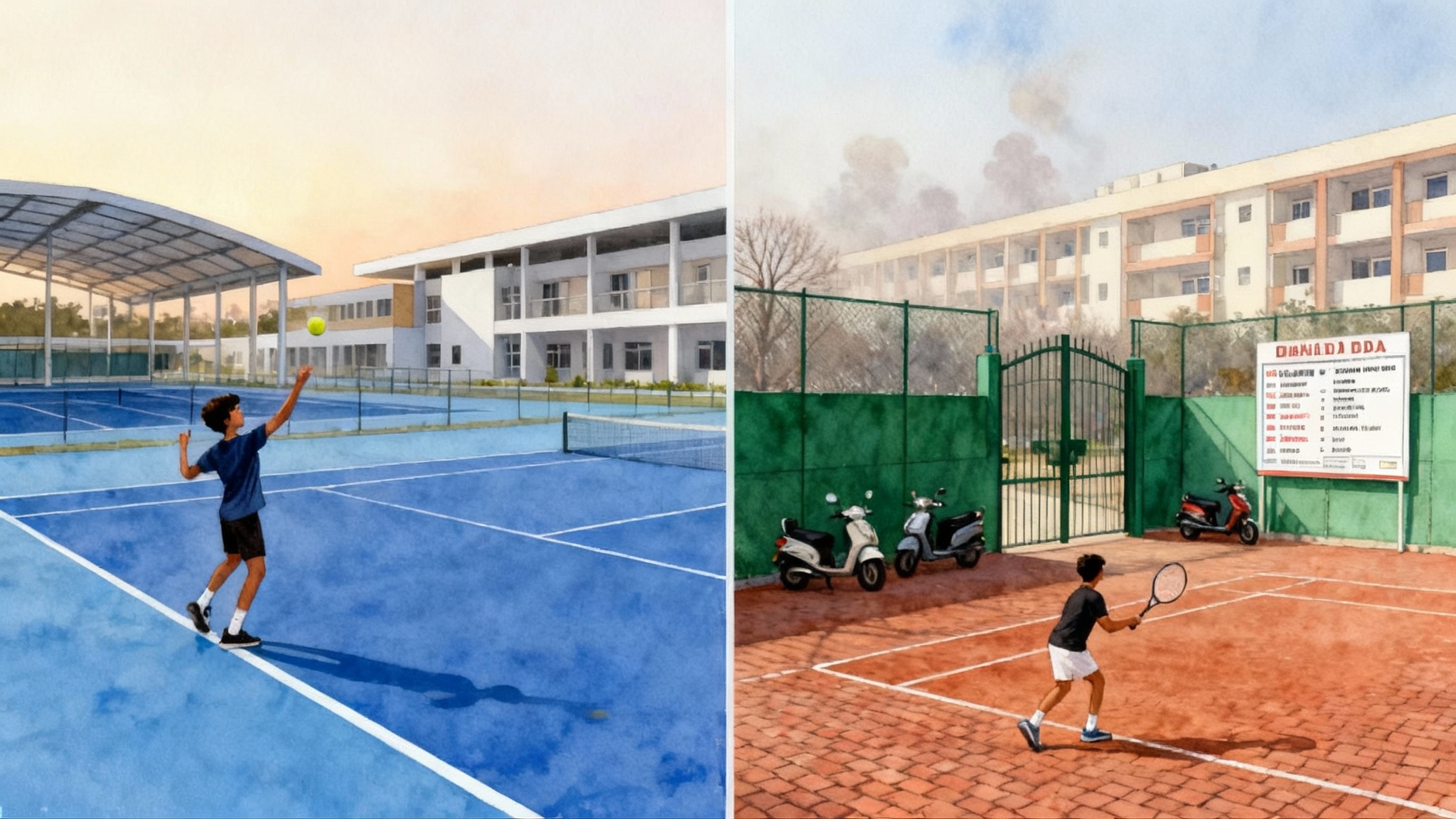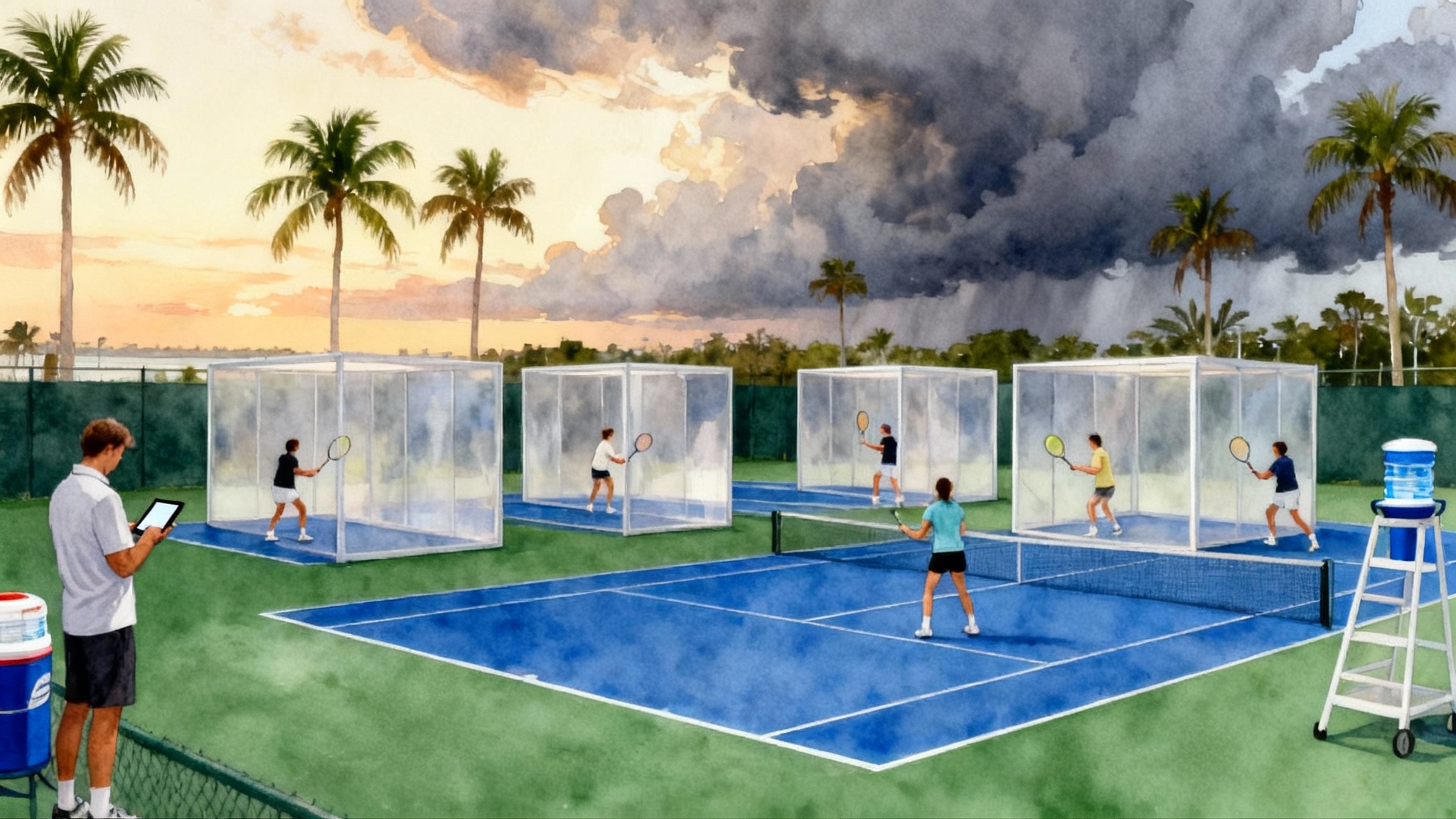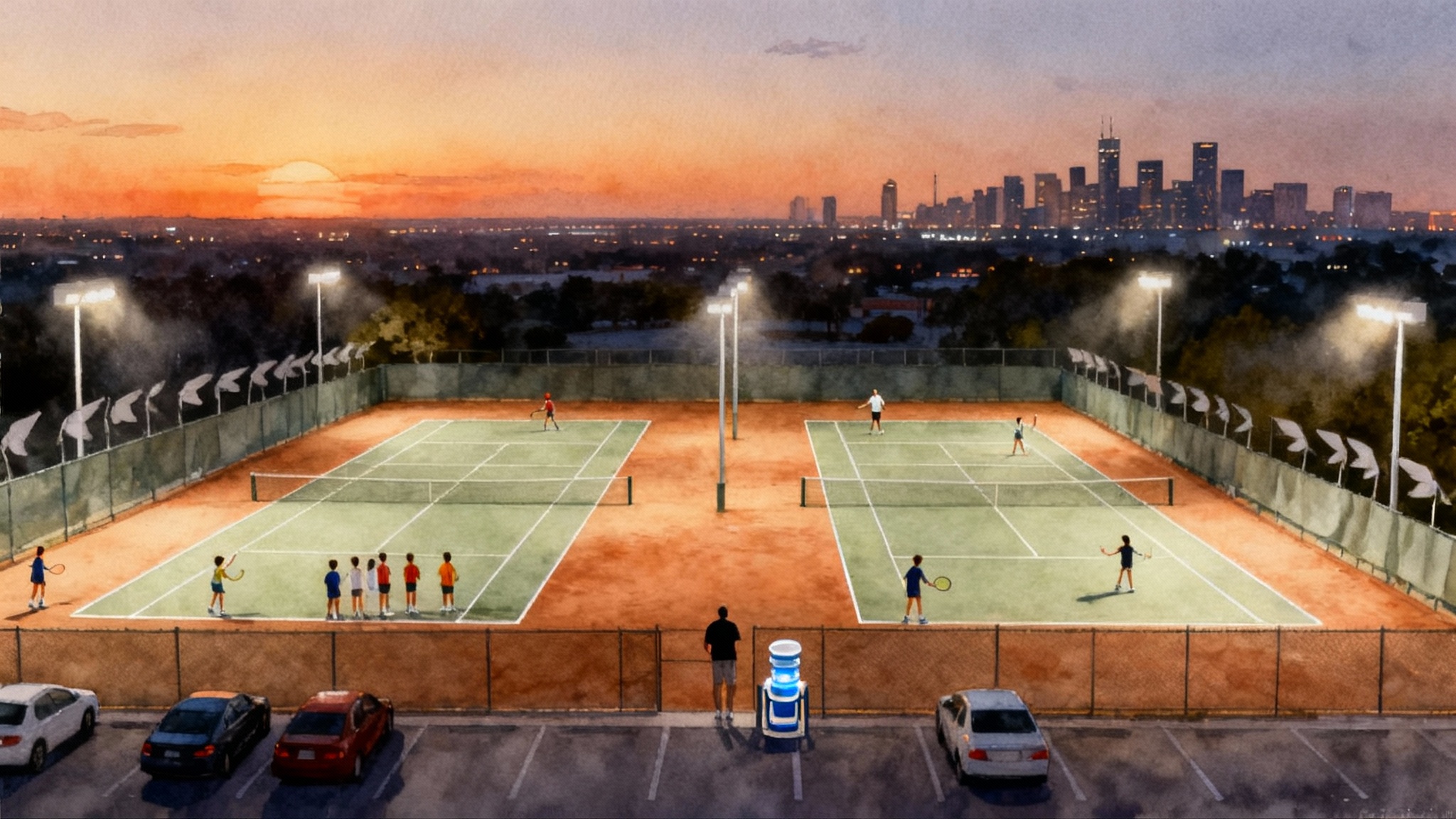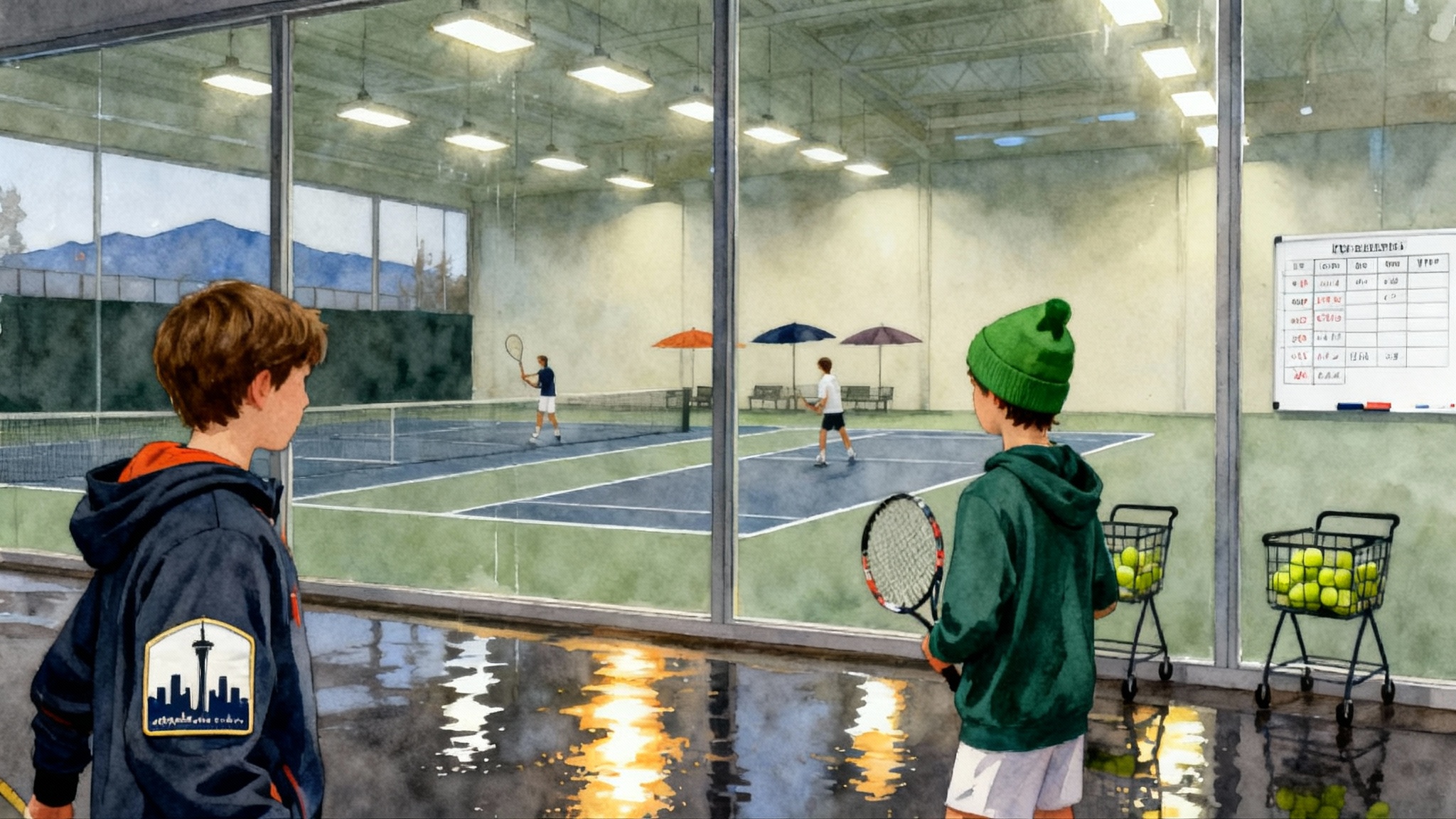Best Lisbon–Cascais–Sintra Tennis Academies 2025–2026
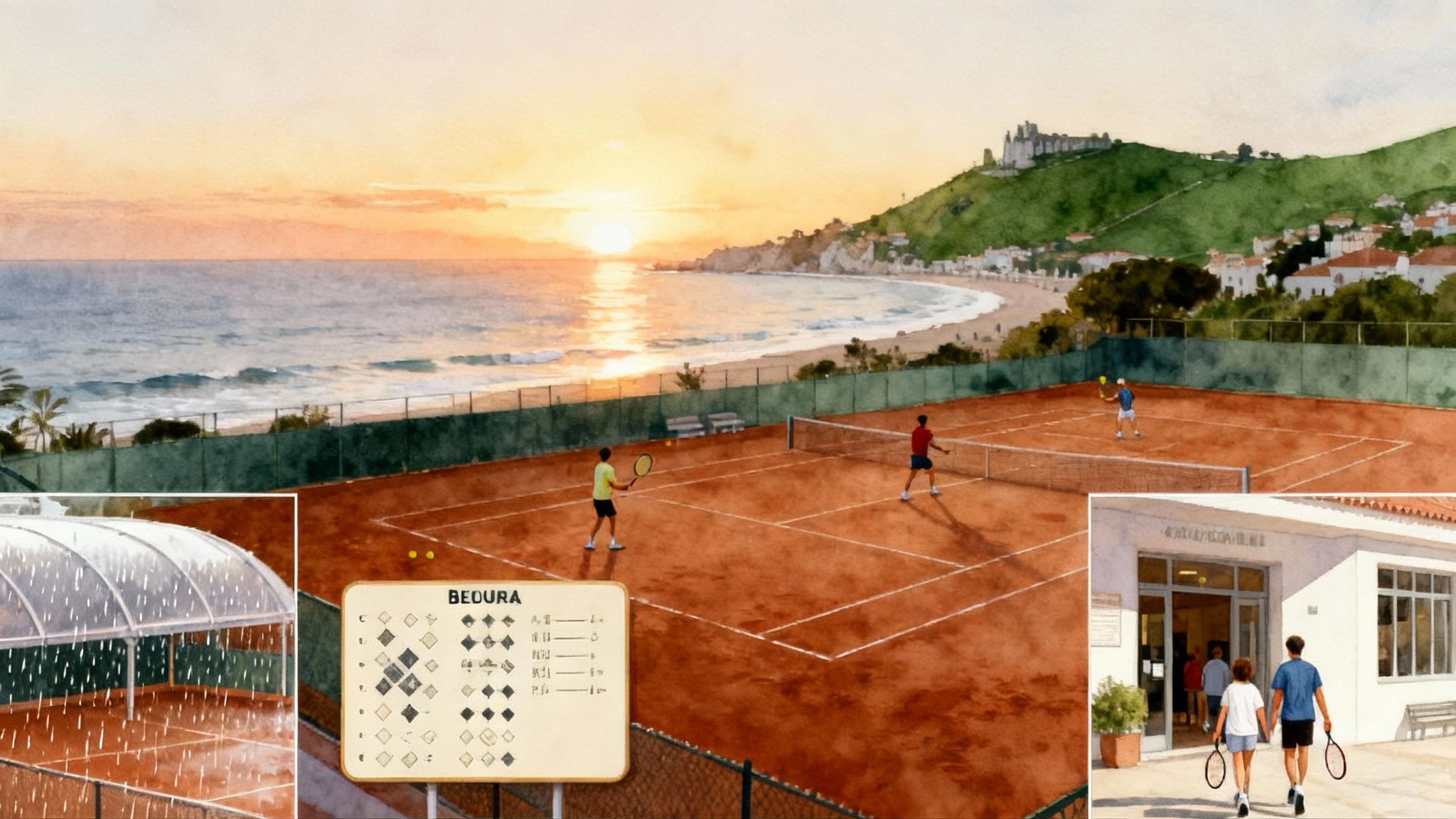
Why this coastal triangle works for tennis families
Draw a 30 minute circle around central Cascais and you cover three useful microclimates. Cascais is dry and breezy in summer, Lisbon runs warmer inland, and Sintra sits higher and cooler with morning mist that clears by late morning. For tennis that means long outdoor seasons, wind that sharpens ball control near Cascais, and summer relief up in Sintra.
Parents pick this area for three practical reasons: a dense map of clay within short drives, major airline access into Lisbon for predictable travel days, and lower all‑in costs than similar Western European hubs. If you want a quick sense of the venue mix before you plan, skim the Estoril club facilities overview.
The quick view: facilities, coaching, schooling, costs
-
Courts and cover
- Clube de Ténis do Estoril, Cascais: heritage club with covered clay plus hard and grass options inside a full‑service campus. See the Clube de Ténis do Estoril profile for the current court mix and programs.
- Beloura Tennis Academy, Sintra: multi‑surface base with covered clay and a balanced hard‑to‑clay ratio that suits transition players. See the Beloura Tennis Academy overview for schedules and formats.
-
Coaching models
- Estoril: club‑school structure with deep level groupings and on‑site tournament energy. Groups split by age and level, with private add‑ons for serve and first‑ball patterns.
- Beloura: compact academy rhythm that pairs two to three clay sessions weekly with one to two hard‑court blocks for serve and return emphasis.
-
Schooling and boarding
- Most families train as day players and live in Cascais, Estoril or Sintra. International‑school options within 20 to 40 minutes cover British and American curricula. Boarding is typically serviced apartments or homestays rather than dorms.
-
Price bands, late‑2025 guide
- Group sessions, juniors: roughly €20–€45 per hour depending on class size and venue.
- Private coaching: €50–€90 per hour, higher for head coaches or weekend slots.
- Holiday camps: €250–€450 per week for juniors with 2–3 hours on court daily plus fitness.
- Full‑time monthly training blocks: €800–€1,500 for training only, plus housing and school. Families running shorter intensives often budget €1,600–€2,400 per month including a modest apartment and local transport.
Spotlight: Clube de Ténis do Estoril (Cascais)
Estoril is Portugal’s most recognizable tennis address and home base of the country’s top men’s pro event in spring. For families, the differentiator is simple: covered clay plus a club culture that lives with tournaments on site, so juniors can watch pros and absorb match habits.
-
Facilities parents ask about
- Courts: multiple covered clay courts, plus hard and grass options.
- Amenities: gym, pool, restaurant and pro shop for quick turnarounds between school and a second hit.
-
Coaching model
A large school makes level‑matched groups easier to arrange on short notice. On clay, coaches emphasize footwork patterns, depth tolerance and rally tolerance under wind. Many families pair groups with a weekly private focused on serve and first‑ball patterns. -
Transparent price bands
Expect group sessions in the €20–€40 range depending on size and coach seniority, private lessons €60–€90, and short holiday blocks €300–€450 per week when offered. Always request a written quote and clarify inclusions like fitness and court hire. -
Sample week for a 13–16 year old
- Monday: 08:00 school; 16:15 warm‑up; 16:30–18:00 clay drilling on heavy crosscourt and neutral rally; 18:15 mobility.
- Tuesday: 07:15 strength basics; 16:30–18:00 live ball and point construction; 18:10 serve targets and returns.
- Wednesday: 16:30 video private 60 minutes on serve plus first forehand; 17:45 mobility.
- Thursday: 16:30–18:00 pattern play on short‑angle plus depth; 18:10 match tiebreak sets.
- Friday: 16:00–17:30 mixed match play with local juniors.
- Saturday: 10:00–12:00 fitness and doubles patterns.
Spotlight: Beloura Tennis Academy (Sintra)
Beloura backs onto the Sintra hills, which makes it several degrees cooler on many summer days. Covered clay keeps sessions consistent when morning mist rolls in.
-
Facilities parents ask about
- Courts: a multi‑surface mix with covered clay plus hard courts for serve‑first reps. See the Beloura Tennis Academy overview for current court details.
-
Coaching model
Beloura operates like a compact academy. After‑school blocks typically run 90–120 minutes, with morning or midday training for gap‑year or online‑schooled players. A weekly rhythm many families like is two hard‑court sessions for serve and return work and two to three clay sessions for point length and defense‑transition. -
Schooling and housing
The catchment includes several international schools across the Sintra–Cascais corridor. Most families rent furnished apartments in Quinta da Beloura or central Cascais and drive 10–25 minutes to training. -
Price bands
Plan for group sessions in the €20–€40 range, privates €50–€85, and week camps €280–€420 depending on volume and coach level. -
Sample week for a 10–12 year old
- Monday: 16:30–18:00 footwork plus forehand patterns on clay; 18:05 cool‑down.
- Tuesday: 17:00–18:30 hard‑court serve targets and return depth; short fitness circuit.
- Thursday: 16:30–18:00 clay live ball and approach patterns.
- Saturday: 10:00–11:30 match‑play round robin.
Weather calendar and court access
- October to April: Expect real rain days, especially in December and January. Covered courts at Estoril and Beloura keep training moving. Pack a light rain jacket and two pairs of clay shoes so you can rotate when one pair is damp.
- May to September: Dry, bright and often breezy near Cascais. Sintra can be a degree or two cooler with occasional morning mist. Book earlier sessions to avoid afternoon crowding in July and August.
U.S. travel logistics and visas
- Nonstops to Lisbon: TAP Air Portugal and U.S. carriers run a mix of seasonal and year‑round nonstops from multiple U.S. gateways. Schedules change by season, so verify your city pair and travel dates directly with the airline.
- Visa rules for U.S. citizens: you can typically enter Portugal for up to 90 days in any 180 day period without a visa. Passports should have at least three months of validity beyond your stay. Always confirm via the official U.S. entry rules for Portugal.
Getting around: Lisbon Airport to Cascais is roughly 35–45 minutes by car outside rush hours. Many families rent a compact wagon for easy trunk space for racquets and bags. Rideshare and taxis are widely available.
On‑ramps to competition: Tennis Europe and ITF
-
Age pathway
- Tennis Europe runs Under‑12 to Under‑16 events with entry via national association approval for non‑residents.
- The ITF runs Under‑18 events on the Junior Circuit. Players need an IPIN account and must track entry deadlines and freeze dates.
-
What this means here
- Portugal’s calendar is dense for a small market, with spring and fall junior events around Greater Lisbon and the Algarve, plus pro tournaments in the capital. Many families pair a two‑week training block with a two‑tournament swing inside Portugal or by crossing into western Spain by car.
Practical steps
- Ask your academy manager to review your player’s ranking and target acceptance lists. 2) Register for the correct tour account and keep medical and parental consent forms handy. 3) Decide whether to chase points on clay or mix in hard‑court events to pressure the serve and first ball. 4) Build a two to four week block that pairs a training taper with consecutive events to improve draw quality.
How Portugal’s value stacks up against Spain and France
-
Clay‑court volume vs density
Spain and France have huge club networks and deep tournament calendars. Portugal will not match Barcelona’s club density or the Paris region’s indoor inventory. What it offers is enough clay within 30 minutes to keep a junior’s daily load on surface, plus covered clay at key clubs to protect winter training time. -
Costs
Training and housing are typically lower in Lisbon–Cascais–Sintra than in Barcelona or the French Riviera for comparable private‑school neighborhoods. The price bands above, plus typical apartment rents, produce a monthly outlay many families find 15–30 percent below those markets. -
Travel and comfort
Direct transatlantic access to Lisbon and compact drives between home, school and club reduce daily friction. For many parents the gain is not just headline costs but fewer hours lost to commuting.
For another European comparison, see our Emilio Sánchez vs Ciudad guide.
Sample all‑in budgets
-
One training week for a junior, non‑boarding
- Coaching: €300–€450 for 8–12 training hours
- Courts and fitness included: often yes, but verify
- Housing: €80–€140 per night for a one‑bedroom in Cascais or Sintra shoulder season
- Local transport: €90–€140 for rideshare, taxis or a rental car
- Total week: roughly €1,100–€1,600
-
One training month for a family of two travelers
- Coaching: €900–€1,500
- Housing: €1,400–€2,200 for a one to two bedroom rental outside peak weeks
- Food and incidentals: €700–€1,000
- Local transport: €300–€500
- Total month: roughly €3,300–€5,200
How to choose between Estoril and Beloura
Choose Clube de Ténis do Estoril if:
- You want covered clay and a heritage club that hosts major events on site.
- Your player thrives in a busy club environment with many level options.
- You value being close to Cascais beaches and the promenade.
Choose Beloura Tennis Academy if:
- You want a balanced hard and clay program with covered clay for winter consistency.
- Your family prefers cooler summer training blocks near Sintra’s microclimate.
- You like a compact academy feel with simple drop‑off and pick‑up.
If your player is under 12 or new to clay, alternate between both for two weeks and track how they respond. Use a simple metric such as rally length per point on clay and first‑serve percentage on hard. Let data, not mood, drive the decision.
Bookings and how to get started
- Confirm school hours first so training blocks are realistic.
- Ask for a written price list, weekly schedule and coach assignments.
- Reserve private slots before group slots so you can target weaknesses.
- If you plan to chase Tennis Europe or ITF events, build the calendar backward from acceptance dates and add light days before match start.
Two helpful links as you plan:
- Official U.S. entry rules for Portugal.
- Estoril’s Estoril club facilities overview.
The bottom line
Portugal’s coastal triangle gives you clay where it counts, hard courts when you need them and covered courts to keep the plan intact through winter. Estoril and Beloura solve for different family profiles, but both remove friction from the weekly routine: close drives, manageable costs and reliable surfaces. Start with your player’s development goals and school calendar, match the club to those constraints, then backfill logistics. That sequence turns a good idea into a season that compounds.


